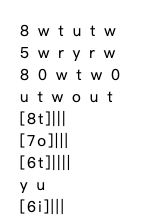Roblox Sheet

Roblox Sheet
I Can't Help Falling In Love With You
Elvis Presley
I Can't Help Falling In Love With You를 Elvis Presley의 방식으로 새롭게 경험해보세요! 키보드를 사용하여 I Can't Help Falling In Love With You Roblox 피아노 시트를 가상 키보드 피아노에서 연주하세요. Roblox 피아노 게임을 플레이하거나 클래식 곡을 연습하려는 분들에게 이 I Can't Help Falling In Love With You Roblox 피아노 시트는 완벽하며, 초보자에서 전문가로 발전할 수 있게 도와줍니다. I Can't Help Falling In Love With You는 TOP 100 Roblox 피아노 시트에 포함되어 있으며, 그 외에도 쉬운 곡, 클래식, 팝, 크리스마스 노래, 디즈니 컬렉션을 함께 즐길 수 있습니다!
44 조회수
Roblox Sheet

Roblox Sheet
I Can't Help Falling in Love
Unknown author
I Can't Help Falling in Love를 Unknown author의 방식으로 새롭게 경험해보세요! 키보드를 사용하여 I Can't Help Falling in Love Roblox 피아노 시트를 가상 키보드 피아노에서 연주하세요. Roblox 피아노 게임을 플레이하거나 클래식 곡을 연습하려는 분들에게 이 I Can't Help Falling in Love Roblox 피아노 시트는 완벽하며, 초보자에서 전문가로 발전할 수 있게 도와줍니다. I Can't Help Falling in Love는 TOP 100 Roblox 피아노 시트에 포함되어 있으며, 그 외에도 쉬운 곡, 클래식, 팝, 크리스마스 노래, 디즈니 컬렉션을 함께 즐길 수 있습니다!
43 조회수



















